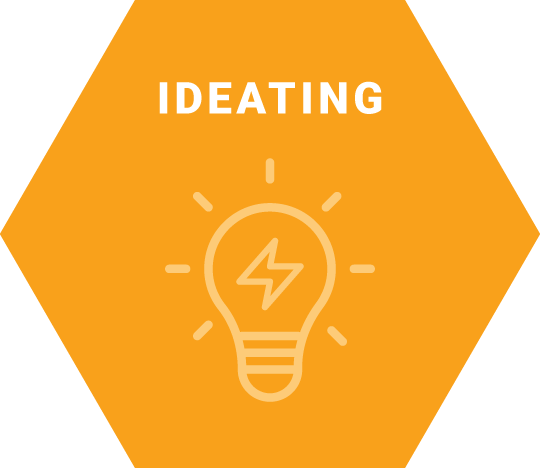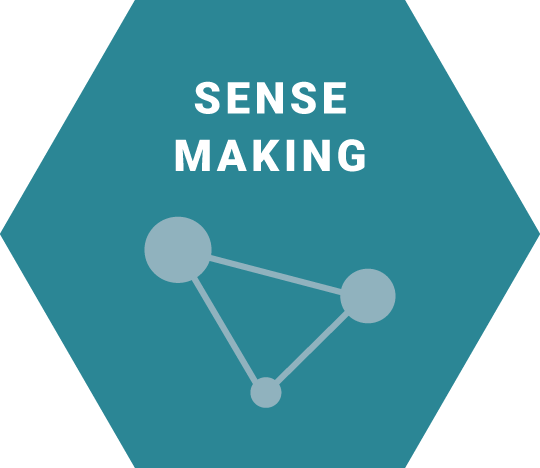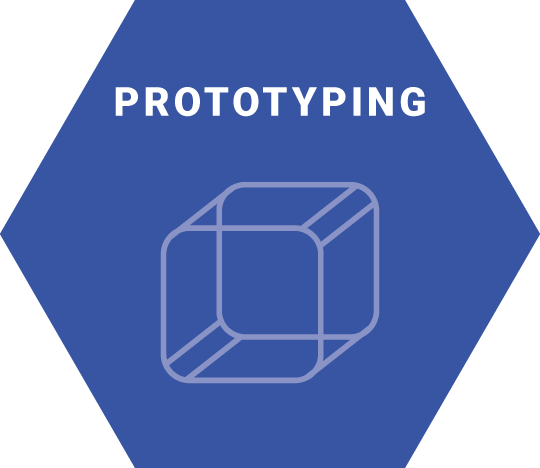| Module | Methods | Who | Where | When |
|---|---|---|---|---|
|
|
Interviews with 5-10 principals, students and parents to identify ideas and proposals that have already been shared. |
Principal, Students, Parents. |
At the schools or virtually. | Weeks 1-2 30-60 minutes per conversation. |
|
|
Round Robin Creative Connections Map |
Community members and parents. | School auditoriums or virtually. | Week 4 Four hour workshop. |
|
|
Affinity Clustering, Themes and Insights to look for similarities between proposed ideas and identify those that resonate with the community. |
Community members and parents. | School auditoriums or virtually. | |
|
|
Concept Poster to translate the themes and ideas from the workshop into a handful of cohesive proposals for improvements. |
Core CPS and City of Chicago team. | CPS office or virtually. | Week 4 60 minutes, after workshop. |
The objective of this plan is to prioritize existing ideas and gather new ideas for school improvement. Capture these ideas by conducting interviews with key stakeholders and analyzing the information to identify what is working and what new ideas can be implemented through a concept poster.
|
|
Where:At the schools or virtually |
When:Wees 1 & 2 |
Supplies Needed:
|
Listening / Interviews
Conduct five to ten interviews x 30-60 minutes per interview with the principal, students, and parents in order to identify ideas and proposals that have already been shared.
- Identify who will be conducting the interviews and who the interviewee will be.
- Identify the type of interview (in-context interview or stakeholder interview) you will conduct.
- Assign roles and responsibilities for your team.
- Determine how long the interviews will be and where they will take place.
- Frame interview questions and write them down.
- Reach out to people you want to interview. Provide them with details about what to expect and schedule time with them.
- Before each interview ensure the person you are interviewing is comfortable.
- Set interview norms.
- Ask their permission before recording or taking photos or video.
- Ease into the conversation by asking them to introduce themselves.
- Ask questions and follow-up questions.
- Be careful to maintain eye contact.
- Ask one question at a time.
- Be patient and give the person time to respond.
- Avoid talking too much. The person you are interviewing is the expert, and you are there to learn.
- Wrap up your interview by asking them if they have any questions for you.
- Ask if you may contact them in the future.
- Thank them for their time.
|
|
Where:School auditoriums or virtually |
When:Week: 4 |
Supplies needed:
|
To develop the skills to actively listen, share ideas, and identify those ideas that resonate with the group.
Ideating / Round Robin
Facilitate one Round Robin exercise with Community members and Parents. Conduct this exercise in five or six groups in order to share existing ideas and gather input to improve school from participants.
- Form groups of four to five people, with each group sitting at a separate table.
- Provide each person with markers, scratch paper, sticky notes, and a copy of the Round Robin worksheet.
- Share a prompt for ideation with the whole group. The prompt is to write down an existing idea for their school.
- Give a 5 to 10 minute overview of the challenge before you ask people to start ideating.
- Give 3 minutes for each person individually and silently to capture one initial idea around the prompt. Ask participants to capture this idea with drawings and words in the top box.
- Each person passes their sheet to the right, or all of the worksheets are gathered and redistributed to another table.
- Give 3 minutes for each person to critique the original idea in front of them, and capture their critique on the second box.
- Each sheet is passed again to a new person.
- Give 3 minutes for each person to improve on the original idea by addressing the most critical challenges captured in the previous round on the third box.
- Each person briefly shares their completed worksheet with the rest of their group.
Ideating / Creative Connections Map
Facilitate one Creative Connections Map exercise(s) with workshop attendees. Conduct this exercise in groups of four or five in order to generate lots of new ideas for school improvement.
- Divide your group into teams of for to five people, you may keep the same groups as before or break apart existing groups to form new ones.
- Give each group a Creative Connections Map template.
- Choose a group for your column headers such as stakeholder groups, common pain points or needs, or specific steps or phases in the experience.
- Select up to 5 categories from your group and write one category in the header of each column of your template.
- Choose 3 enablers to put as headers for each row of your template. You may select from the enabler cards provided in the template or come up with your own.
- Leave one row blank for the “wild card” category to capture any ideas that don’t fit into any other selected enabler.
- Conduct the first round of ideation.
- Ask each person to produce ideas individually in silence for seven minutes.
- Each person should generate as many ideas as possible, aiming for at least one idea per cell.
- Place ideas in the appropriate cell as soon as it has been captured on a sticky note.
- Conduct the second round of ideation.
- Identify cells that are empty or lacking ideas.
- Spend 3 minutes individually generating ideas for the cells that were identified as empty or lacking ideas.
- As a team, spend 10 minutes assessing your poster. Acquaint yourself with the ideas generated by other team members, ask clarifying questions, and build on each other’s ideas.
- Identify individual ideas or groups of ideas that hold strong potential moving forward.
LEARN MORE ABOUT CREATIVE CONNECTIONS MAP
Affinity Clustering, Themes and Insights
Conduct an Affinity Clustering, Themes, and Insights exercise with workshop attendees in order to look for similarities between proposed ideas, and identify those that resonate with the community.
- Begin by pinning up all the ideas from the round robin and those that hold the strongest potential based on the creative connections map.
- Pin these to a wall, large sheet of butcher paper, flip charts, foam core boards or virtual white board.
- Choose one piece of data. Consider the meaning behind the statement.
- Compare the other pieces of data until you find a second that you think has a connection to the first.
- Write down the relationship in 1 - 3 words (a theme) next to them.
- Continue to compare the remaining pieces of data with the theme.
- If a data point easily fits within the existing theme, place it in the group.
- If a data point does not fit into an existing theme, place it to the side of the existing theme(s) to start a new group.
- Once a new group has multiple data points in it, label it with a theme.
- Repeat until you’ve worked through all the data.
- If a theme has many pieces of data, see if it can be further broken into multiple themes.
- If a theme has very few pieces of data, see if each piece of data will fit within a larger theme.
- Reflect on the connections between the data points in each cluster.
- Rewrite each final theme as one or two short sentences.
- Select one theme and ask “why”?
- Use the data points and your own perspective to write an insight that definitively, provocatively and completely answers “why”.
- Repeat this across all other themes.
- Once you finish, step back and assess your work.
|
|
Where:CPS office or virtually |
When:Week: 4 |
Supplies Needed:
|
Prototyping / Concept Poster
In groups of 3 to 4 people, the core project team creates up to 4 concept posters in order to translate the themes and ideas from the workshop into a handful of cohesive proposals for improvements.
- Divide participants into small groups of three or four people.
- Provide groups with a separate work space, copies of the Concept Poster, copies of ideas and themes from the workshop, and plenty of scratch paper and sticky notes.
- Select and capture all the ideas that will be part of their group’s concept in the first box on the poster.
- Name the concept as if it were a new product or service hitting the market.
- Articulate the concept’s key benefits.
- Illustrate the concept as a mini storyboard, using the following steps as a guide.
- Begin your storyboard by illustrating and describing the problem the concept will address.
- Depict and describe how people will become aware of your concept.
- Show and describe how people will use key features of your concept.
- Show and describe how someone’s needs have been met due to the concept.
- Write one key assumption for each frame of the storyboard.
- Identify one or two key assumptions across the whole storyboard that are most critical to the success of the concept as a whole.
- One group presents the concept to the larger group in 3 minutes or less.
- For the next 2 to 3 minutes, discuss questions, feedback and reactions from the rest of the group.
- Repeat presentations and feedback discussions for each group.
- Each group uses this early feedback to make changes to their concept before continuing.



